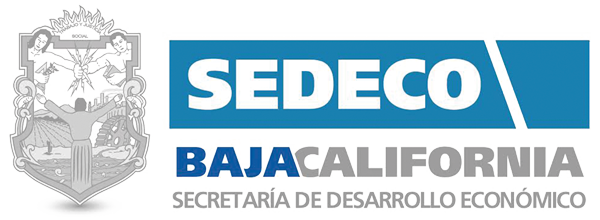Additive Manufacturing Workshops - November 3rd, 2015
![]() = Additive manufacturing focus
= Additive manufacturing focus
![]() = Aerospace Focus
= Aerospace Focus ![]() = Automotive focus
= Automotive focus ![]() = Medical devices focus
= Medical devices focus
|
|
|
| 10:45am - 11:15pm |
““Discover Multi-CAM “Adaptive” Post-Processing & Machine Simulation”” |
|
Morty Smolash, VP Sales North America, ICAM Technologies Corp. |
|
|
|
| 11:20am- 11:50am |
“Design and Manufacturing of Aerodynamic and Hot Section Fabric Reinforced Seals and Thermal Insulation” |
|
Gabriel Garcia, Engineering Manager, Hutchinson |
|
|
Session to describe the different type of seals and thermal insulations manufactured in the Ensenada facility, their applications in the field, as well as manufacturing capabilities and engineering resources for project management, product design and qualification. |
|
| 11:55am - 12:25pm |
“Design for the freedom of additive manufacturing” |
|
Russell Vernon, Application Engineer, Altair |
|
|
When topology optimization is utilized to generate designs for additive manufacturing, many exciting new benefits present themselves (lightweight parts, stronger parts, no wasted materials, cost savings, etc.). This presentation will answer a number of questions. What is topology optimization? Why does topology optimization makes sense for additive manufacturing? How does topology optimization work? Who has been applying topology optimization? Why should topology optimization be on a designer’s desktop? What are the future opportunities? This presentation will include multiple real-world examples of companies using topology optimization to design for and enhance the benefits of additive manufacturing. |
|
| 02:00pm – 02:30pm |
“Developments and Challenges in Testing, Inspection, and Quality Assurance of AdditiveManufacturing Processes and Manufactured Products” |
|
Prabir Chaudhury, Exova Inc. |
|
|
Advent of metal 3D printing or Additive Manufacturing has opened a new, agile, cutting edge technology that is projected to have unprecedented advances in manufacturing. Current R&D and limited productions have proven the technology to be real and revolutionary, especially because of the ability to produce very complex, functional parts without tooling in a very short time. In order to integrate these advanced manufacturing processes to various industries, it is vitally important to assure consistent manufacturing processes as well as products to be consistent and high quality. Because of the revolutionary nature of the additive manufacturing, quality assurance, reliability and reproducibility of the processes and the generated products need to be developed accordingly, especially as more complex parts are produced. This workshop will discuss the current and future developments and challenges in testing, inspection, and quality assurance approaches in various industries. |
|
| 02:35pm – 03:05pm |
“Automated CFRP production of the future” |
|
Jens Kühl, Managing Director, SAERTEX Stade GmbH & Co. KG |
|
|
To meet the future needs in quantity and quality it is necessary to have an automated production to be effective. SAERTEX developed a fully automated process to build CFRP aircraft parts in infusion technology. The cutting and handling of textile blanks will be done by robots. Microwave technology will be used for preforming and the vacuum and resin supply will be computer controlled to reduce waste. The demoulding and tool cleaning will be done by robots. This process secures a high level of reproducible and quality at proper cost efficiency. |
|
| 03:10pm – 03:40pm |
“IMS Manufacturing Technology Platform Program: Global Research and Business Innovation Networks” |
|
David Romero, International Coach, Intelligent Manufacturing Systems |
|
|
The Intelligent Manufacturing Systems (IMS) is an industry-led, international business innovation and research and development program established to develop the next generation manufacturing and processing technologies through multi-lateral collaboration. The IMS network is composed by 31 countries and provides a Manufacturing Technology Platform that facilitates the access to international resources, technologies and markets through two types of approaches to research, development and innovation (RDI): top-down technology push innovation and bottom-up driven value generation. IMS partners are enabled to design and launch global partnerships in a way that is consistent with their business plans, innovation strategies and long-term resource development ideas so they can successfully collaborate to build competitive advantages. |
|
|
03:45 pm- 04:15 pm |
“Industrial Applications with an Electron Beam Accelerator: Medical Device Sterilization and Polymer Cross-Linking” |
|
Macario Moreno de Matías, General Manager, Avantti Mediclear María Garmendia Haro, Project Development Manager, Avantti Mediclear |
|
|
A detailed slideshow on the radiation process with an electron particle accelerator (E-Beam) for:
|
|
|
04:20 pm- 04:50 pm |
“From rapid prototyping to additive manufacturing: some applications from the National Laboratory of Additive Manufacturing, 3D Digitalization & Computerized Tomography MADiT” |
| |
Leopoldo Ruiz Huerta, Dr. in Mobile Engineering , National Laboratory of Additive Manufacture, 3D Digitalization & Computerized Tomography, Center of Applied Sciences and Technological Development, Universidad Nacional Autónoma de México UNAM |
|
Los conceptos de Manufactura Aditiva (también conocida como 3D Printing), Digitalización 3D (escaneo en tres dimensiones) y Tomografía Computarizada por Rayos X, han cobrado popularidad en años recientes debido a su potencial de aplicaciones que se expande a temas médicos, biológicos, marinos, materiales, entre muchos otros etc. El Laboratorio Nacional de Manufactura Aditiva, Digitalización 3D y Tomografía Computarizada (MADiT), que se ubica en el CCADET y es el resultado del esfuerzo de varias dependencias UNAM y otras instituciones externas; se consolida en el año 2014 con la finalidad de fortalecer las actividades de Investigación y Desarrollo Tecnológico que ocurren en el país y que requieran dicha infraestructura para su materialización. Durante la presentación se abordarán los aspectos de la infraestructura y capacidades con que se cuenta y algunas aplicaciones desarrolladas en el propio MADiT, que van desde las aplicaciones de preservación de material histórico y cultural, pasando por actividades paleontológicas y sus aplicaciones en manufactura de baja a mediana escala. |



